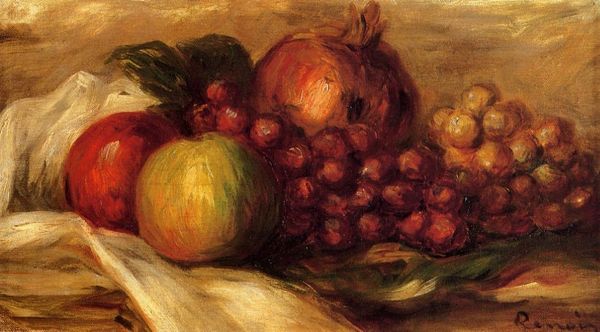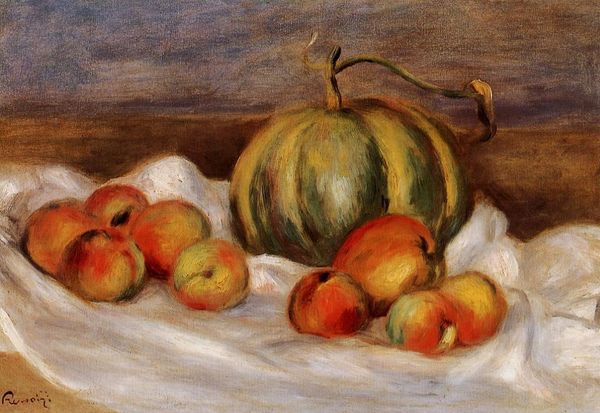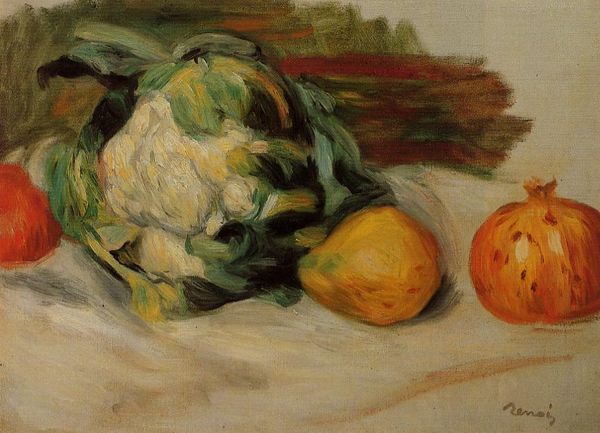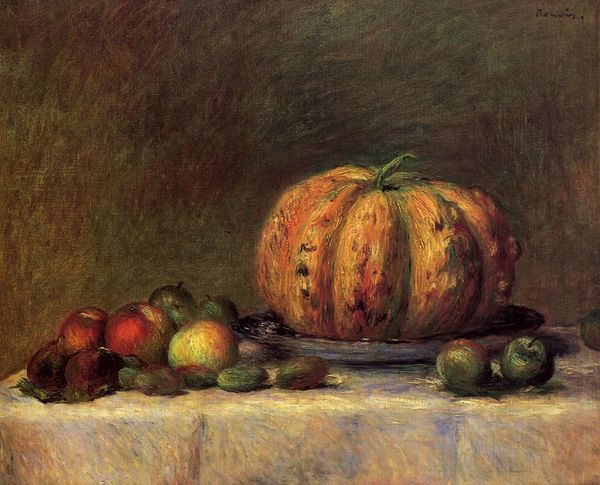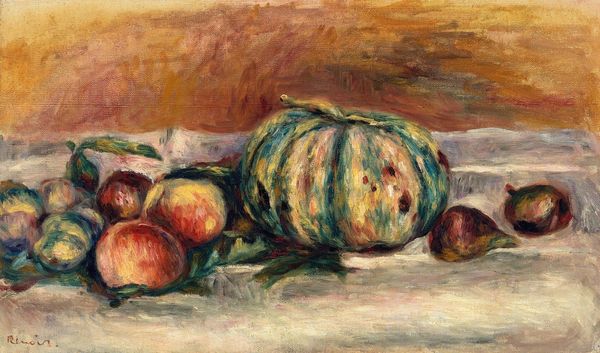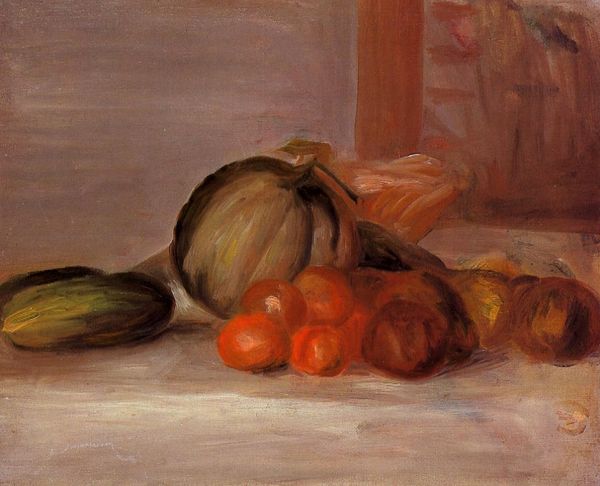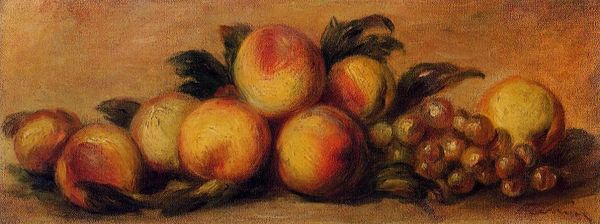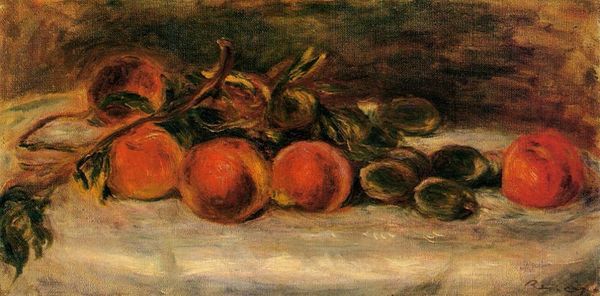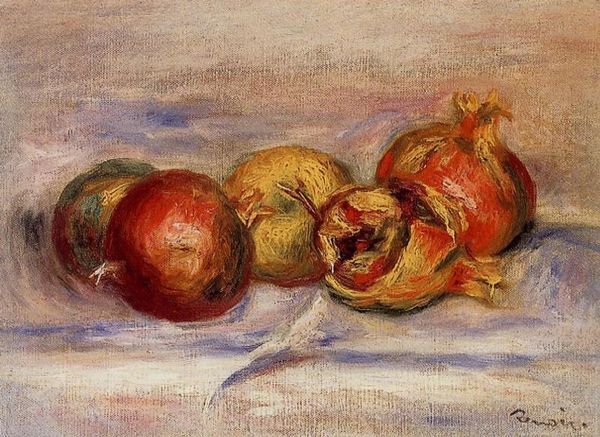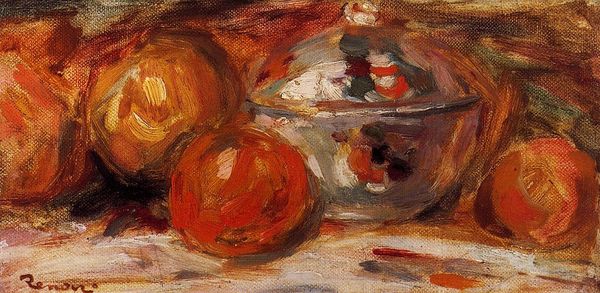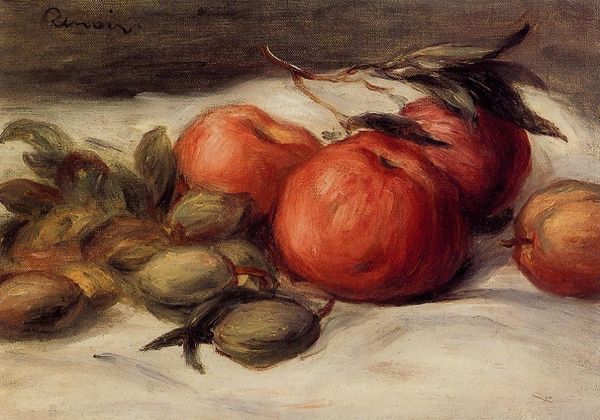
Copyright: Public domain
Curator: Welcome. Before us we have Pierre-Auguste Renoir’s still life, “Melon and Tomatos,” created in 1903. It’s a delightful, late-period example of his work in oil. Editor: My first impression is how much movement is captured in something that should be still. It’s not just static fruit; there’s a liveliness here, almost like a fleeting glimpse. Curator: Absolutely. Consider the late 19th and early 20th centuries and the surge of scientific rationalism in a changing colonial context; perhaps still-life paintings showing nature became more important in relation to these huge historical shifts. This offers, maybe, a glimpse of how artists grappled with their identities within a system, colonialism, which impacted artistic traditions globally. Editor: That’s an interesting way to consider the context, especially given the ripeness and abundance displayed here. To my eye, this composition subtly references classical imagery of bounty and harvest—a loaded symbol! Renoir presents us with more than mere fruit. There is almost an idealized Eden being represented. What do you read in these food items, their symbols? Curator: I wonder about his choices. Are these particular items a reflection of regional produce and the changing politics of food availability for various communities, a moment of shifting local economies due to an uneven capitalistic global transformation? There is so much in his composition to ponder beyond beauty! Editor: It does suggest connections to a complex web of production, labor, and maybe exploitation too. His blurred style could represent a lack of clarity to the overall systemic inequity. Despite the beautiful surface, undercurrents are worth examining here. Curator: Thank you for guiding me to new connections! I suppose approaching artworks with interdisciplinary questions gives opportunities to better understand sociopolitical concerns, cultural narratives, and shifting identities—especially the artist’s positionality at any given time. Editor: And likewise, through analyzing historical conditions, the iconic power of an artist like Renoir is brought into greater understanding. Thanks for lending your perspective on symbols today.
Comments
No comments
Be the first to comment and join the conversation on the ultimate creative platform.
